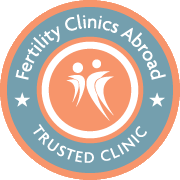What is adenomyosis, and how does it affect my treatment?
by Ermina Konstantinidou, last updated 01 Feb 2023,
2 min read
Having painful and heavy bleeds is common for many women. However, for some women, these symptoms can be significantly more severe, and there may be an underlying reason causing such discomfort, one of them being adenomyosis.
What is adenomyosis
Adenomyosis is a condition characterized by the presence of endometrial tissue in the muscular wall of the uterus. It is not a very common as it affects about 1 in 500 women. The prevalence is higher in women of older reproductive age groups.
What happens during the menstrual cycle in the presence of adenomyosis?
Essentially, the endometrial tissue entrapped within the muscle wall of the uterus behaves similarly to the endometrium inside the cavity of the womb. This means that this tissue tends to enlarge during the menstrual cycle and becomes softer and sheds during menstruation. This may lead to heavy menstrual blood loss, intense pain and significant bloatedness during menstruation.
What are the symptoms?
As mentioned above, the most common symptoms are heavy and painful bleeds accompanied by bloating. Other symptoms may include:
- Pain during intercourse
- Urinary issues
- Infertility
How can it be diagnosed?
Adenomyosis can be hard to diagnose, which is why it is often referred to as a silent condition. Some of the tests used to diagnose this condition include:
- Ultrasound scan
- MRI or CT scan
- Laparoscopy
- Biopsy
How does it affect fertility?
Adenomyosis can affect implantation rates negatively when the adenomyotic tissue is close to the uterine cavity and distorts the anatomy.
How can I have IVF treatment with adenomyosis?
In assisting reproduction, we have ways to battle the negative implications of adenomyosis and allow women to proceed with an embryo transfer having their chances of implantation unaffected by these conditions. This can be achieved through the use of a medication called GnRH agonist (usually in a depo shot form), which will suppress the adenomyotic tissue. Once suppressed, the endometrial preparation phase can start and, when ready, we can proceed with a frozen embryo transfer. This means that in women that may have stimulation treatments, after the egg retrieval, the embryos will be cryopreserved once created, and they will proceed with a frozen embryo transfer at a later stage.
Treating adenomyosis surgically may be tricky, as resection of the damaged tissue is sometimes difficult, and scar tissue formation post-operatively is quite common
Although getting diagnosed with adenomyosis may initially sound scary, there are ways to overcome the obstacles it may pose regarding your fertility. With proper care, thorough assessment, and understanding of one’s medical history, receiving the appropriate treatment to create the family of your dreams is feasible. For more information on how we can help you maximize your chances of achieving pregnancy while having adenomyosis, you can contact us directly by clicking here.

Ermina is a Midwife and an International Patient Coordinator at Newlife IVF Greece.










